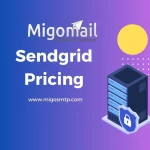Shift your automated email marketing into hyper-drive by pre-defining 5 key segments based on fine-grained customer information and behavioural data:
Personalize your e-commerce Email marketing has long been the cornerstone of any successful eCommerce operation. And, to a large extent, where email campaign segmentation and hyper-personalization were once considered optional, this is no longer the case. Together, they have redefined the rules for building automation, dramatically increasing the relevance of automated campaigns for online shoppers. With this in mind, you would do well to include both types of activities in your email marketing playbook, lest you lose out on customers and leave money on the table.

Segmentation and Hyper-Personalization – personalize your e-commerce email
To drive home the point, consider the following: The DMA (Data & Marketing Association) study found that fragmented emails can generate up to 58% of all email revenue, while personal emails result in non-personal high transactions. Occur. Rate can be up to 6 as against email.
Now, imagine if you could leapfrog the issues faced by many of your peers. And combine the power of these two proven email marketing tools to hit your eCommerce business sales goals. For example, what if you could use hyper-personalization to improve your mailing list? Well, no more dreams. You can easily capture the benefits of segmentation and hyper-personalization by using top-quality email marketing platforms and initially using 5 strategic segments.
One of the best ways to leverage this in-depth customer data is to use it to create pre-made segments, where the data is used to create criteria to segment your customers into more precise groups called You can associate with hyper-personal marketing.
Pre-defined segments that you can readily create in your email marketing system, which I consider must-haves for E-commerce businesses:
First-time or recent customers
Cash in on the high profitability of repeat sales by the dynamic segment. First-time or recent customers and provide them with a more suitable customer journey.
Despite the fact that retaining customers is cheaper than new ones, a 5% increase in retention rates can increase profits from 25% to 95%.
You can take advantage of this opportunity and establish long-term relationships. Using dynamic segmentation with new clients. Dynamic segmentation allows you to use real-time data to automatically segment customers that meet certain pre-defined criteria.
Lapsed Customers
Use specialized re-engagement emails based on specific customer data points. Putting lapsed customers in their circle. It can be difficult to please some customers. One day, they may show interest in your products, even shopping. And the next day, they can turn cold.
Once you fragment lapsed customers, you can pull them back into your sales funnel via a re-sale email. Depending on what you already know about them, you can including any hyper-personalization data on the file.
Loyal Customers
In short, for customers who are obsessed with your products and service. For example, provide more of them through cross and up-selling.
Fact: Loyal customers are more likely to buy other products from you. A study by Bain & Co. revealed that around 70% of Gap Online customers would consider buying furniture from Gap, while 63% of online grocery shoppers would buy cosmetics and OTC medicines from their online Gaydar.
Therefore, a pre-made segment for loyal customers will simplify your upsiding and cross-selling efforts. Using your shopping history, send relevant recommendations to your fans that may inspire them to place additional orders.
Having a loyal customer segment gives you a great opportunity to convert your enthusiasts into brand advocates. Offer them special deals, special discounts or even “cash-back” for each referral they indicate to your business.
For more related information go and check out migomail and telcob.
windows 7 home basic lizenz kaufen






